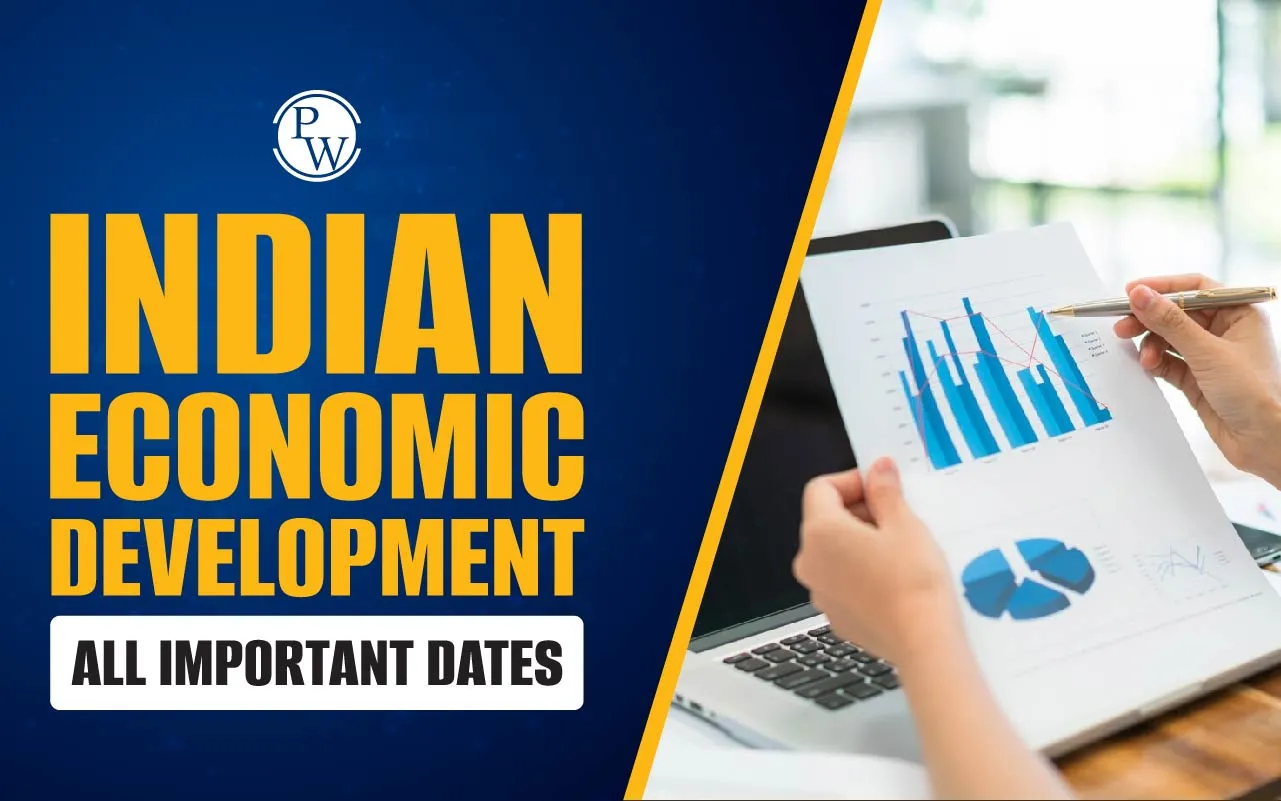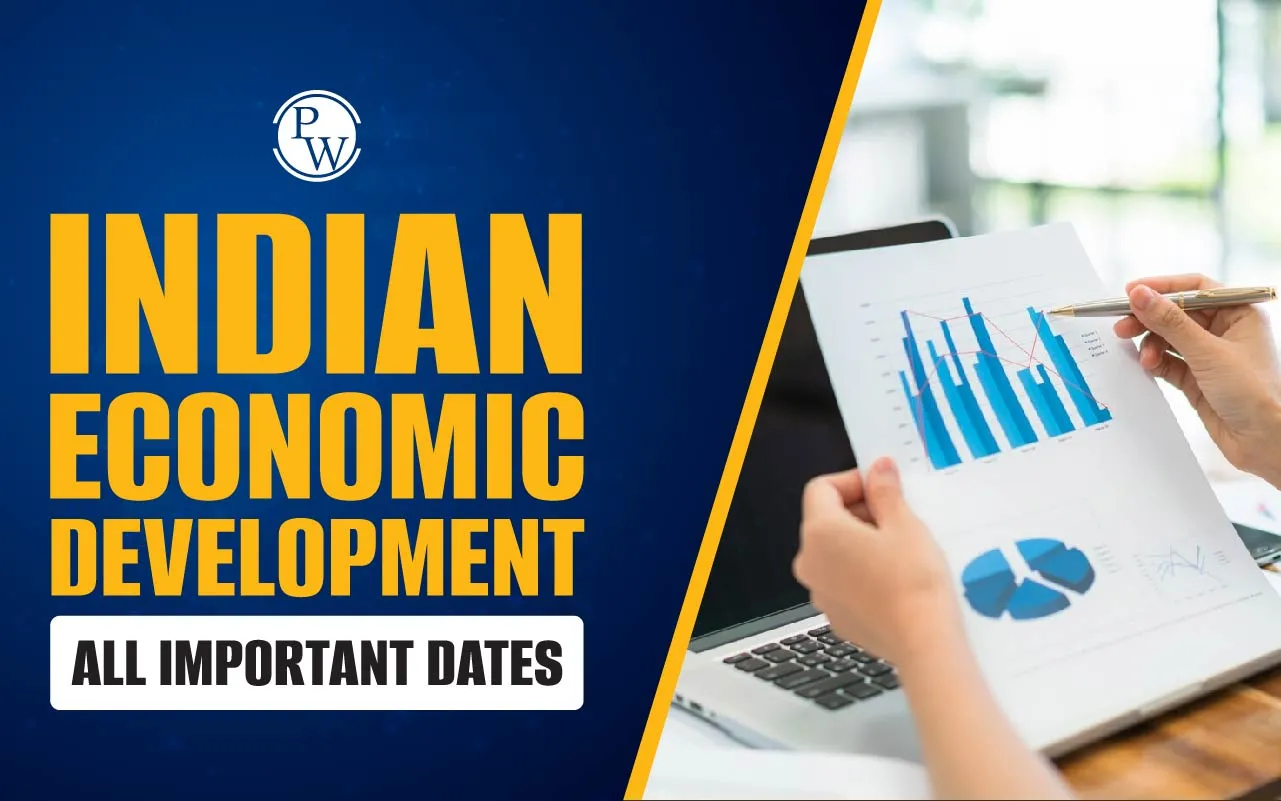
Indian Economic Development All Important Dates: Indian economic development has been a dynamic journey, shaped by historical events, industrial revolutions, and policy reforms. From the colonial era to modern economic advancements, several milestones have significantly influenced the nation's economic growth. This detailed blog explores Indian Economic Development All Important Dates, covering key events, reforms, and policies that have played a crucial role in shaping India’s economy.
Indian Economic Development
India's economic development has been marked by a series of transformations, from agrarian dependence to industrial expansion and technological advancements. Over the decades, strategic policy changes, infrastructural improvements, and financial reforms have contributed to India's emergence as a global economic player. With a growing focus on digitalization, self-reliance, and sustainable development, the country's economic landscape continues to evolve, striving for inclusive growth and resilience against global challenges.
All Important Dates of Indian Economic Development
Below, we’ve mentioned all the important dates of indian economic development:
Colonial Era and Economic Foundations
The colonial era played a significant role in shaping India’s economic structure. British policies led to the exploitation of resources, deindustrialization, and a shift toward an agrarian economy. This period laid the economic foundations that influenced post-independence reforms and development strategies.
1757 – The Battle of Plassey
The Battle of Plassey marked the beginning of British rule in India. This event allowed the British East India Company to establish economic control, leading to the exploitation of resources and the decline of indigenous industries.
1850 – Introduction of Railways
The first railway line was introduced in India, connecting Mumbai and Thane. This development revolutionized transportation and trade, enhancing mobility and industrial growth.
1852 – India's First Postage Stamp
India introduced its first postage stamp, symbolizing the evolution of its postal system. This development played a key role in enhancing communication and commerce.
1881 – First Population Census
India conducted its first systematic population census. This data collection initiative helped shape demographic and economic policies.
1907 – Establishment of Tata Iron and Steel Company
The foundation of Tata Iron and Steel Company (TISCO), now known as Tata Steel, marked the beginning of industrialization in India, laying the groundwork for the country’s modern steel industry.
1921 – Population Growth Shift Noticed
The 1921 Census indicated a significant demographic shift, marking the first recorded decline in population growth. This trend highlighted economic and social transformations.
Post-Independence Economic Milestones
Post-independence, India embarked on a journey of economic transformation, focusing on self-sufficiency, industrialization, and policy-driven growth. This period witnessed the implementation of Five-Year Plans, nationalization efforts, and significant agricultural revolutions that laid the foundation for modern economic progress.
1947 – India Gains Independence
With independence, India inherited a struggling economy marked by low industrial output, high poverty levels, and a heavy reliance on agriculture.
1950 – Establishment of the Planning Commission
The Planning Commission was set up to formulate and implement Five-Year Plans to guide economic growth and development.
1951 – First Five-Year Plan
Focused primarily on agricultural development, irrigation, and rural infrastructure, the first plan aimed to stabilize the economy.
1956 – Second Five-Year Plan
This plan emphasized rapid industrialization and the expansion of the public sector.
1965-1966 – Introduction of the Green Revolution
The Green Revolution was initiated to boost food grain production through advanced agricultural techniques and high-yield varieties.
1969 – Nationalization of 14 Commercial Banks
This major reform aimed to bring banking under government control to promote financial inclusion and economic stability.
1970s – White Revolution
Led by Amul and other cooperatives, the White Revolution transformed India into the world’s largest producer of milk, ensuring self-sufficiency in dairy production.
Economic Reforms and Global Integration
India's economic landscape underwent a major shift with the introduction of economic reforms and policies aimed at integrating with global markets. These reforms focused on liberalization, privatization, and globalization, paving the way for increased foreign investment, industrial growth, and a competitive market environment.
1982 – Establishment of the National Bank for Agriculture and Rural Development (NABARD)
NABARD was created to enhance rural credit systems and support farmers in improving productivity and financial stability.
1991 – Economic Liberalization
A landmark moment in Indian economic history, liberalization introduced reforms that opened markets, reduced trade barriers, encouraged foreign investment, and shifted to a free-market economy.
1995 – India Joins the World Trade Organization (WTO)
India became a member of the WTO, integrating with the global economy and modifying trade policies to support international trade and commerce.
1999 – Establishment of the Telecom Regulatory Authority of India (TRAI)
TRAI was introduced to regulate and improve India’s telecommunications sector, contributing to the digital revolution.
Modern Economic Policies and Reforms
India's economic policies in the modern era have focused on structural reforms, financial inclusion, and digital transformation. These reforms have played a significant role in strengthening economic stability, enhancing industrial growth, and promoting self-reliance.
2005 – Introduction of the National Rural Employment Guarantee Act (NREGA)
NREGA was launched to provide employment to rural households, improving livelihoods and reducing poverty.
2012 – Amendment of the Right to Education Act
The act was amended to ensure free and compulsory education for children up to the age of 14, strengthening India's human capital.
2017 – Implementation of the Goods and Services Tax (GST)
GST replaced multiple indirect taxes with a unified tax system, promoting economic integration under the 'One Nation, One Tax' initiative.
2020 – Announcement of Atmanirbhar Bharat Abhiyan
A self-reliance initiative, this policy aimed to boost domestic manufacturing and reduce dependence on imports.
The Indian Economic Development All Important Dates showcase India’s evolution from a colonial economy to a modern, globally integrated economy. Understanding these milestones is essential for students, researchers, and policymakers as they provide valuable insights into economic strategies and structural transformations.
From the establishment of the Planning Commission in 1950 to the economic liberalization of 1991 and the introduction of GST in 2017, each milestone has played a crucial role in shaping India's economic framework. The Indian Economic Development All Important Dates highlight the significance of planned economic strategies, industrial revolutions, and financial regulations in driving national growth.
By acknowledging the Indian Economic Development All Important Dates, individuals can gain a deeper understanding of the country’s economic trajectory and the policies that continue to influence its future. This knowledge not only helps in academic preparations but also provides a broader perspective on India's journey toward economic self-sufficiency and global recognition.
Join PW Commerce Online Course and unlock your potential with quality education and dedicated learning support.
Indian Economic Development All Important Dates FAQ
What are the key phases of Indian economic development?
What is the significance of Atmanirbhar Bharat Abhiyan?
What was the role of the Green Revolution in Indian agriculture?













